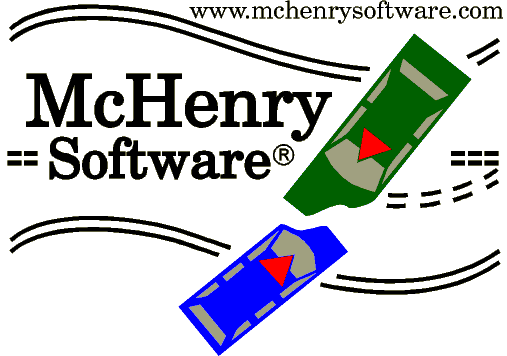
SAE Paper 97-0960: APPENDIX 3: Clarifications
- The existence of significant errors related
to restitution that are present in both the original CRASH (EDCRASH) and
original SMAC (EDSMAC) computer programs must be acknowledged. It is common
knowledge that the original CRASH (EDCRASH) program underestimates the
 V in barrier crashes
by approximately 10 to 20% at 30 MPH and by a greater amount at lower speeds
as a result of the fact that restitution is completely ignored. The original
SMAC (EDSMAC) form of simulation of restitution is crude, with rarely changed
inputs, and it cannot rationally be expected to produce reliable and accurate
combinations of dimensional recovery and partial return of absorbed energy
for all vehicles under all collision conditions. In fact, its under-prediction
of structural recovery produces a similar range of underestimates of
V in barrier crashes
by approximately 10 to 20% at 30 MPH and by a greater amount at lower speeds
as a result of the fact that restitution is completely ignored. The original
SMAC (EDSMAC) form of simulation of restitution is crude, with rarely changed
inputs, and it cannot rationally be expected to produce reliable and accurate
combinations of dimensional recovery and partial return of absorbed energy
for all vehicles under all collision conditions. In fact, its under-prediction
of structural recovery produces a similar range of underestimates of
 V.
Thus, the status quo regarding restitution effects in existing computer
programs is very difficult to defend on a logical basis.
V.
Thus, the status quo regarding restitution effects in existing computer
programs is very difficult to defend on a logical basis.
- The ranges of errors (underestimates)
indicated in the paper for damage-based
 V
values from the original CRASH and SMAC programs, that are produced either
by a total neglect of restitution (CRASH) or by under-prediction of structural
recovery (SMAC) are intended to provide the reader with approximate measures
of the practical significance of the effects of restitution.
V
values from the original CRASH and SMAC programs, that are produced either
by a total neglect of restitution (CRASH) or by under-prediction of structural
recovery (SMAC) are intended to provide the reader with approximate measures
of the practical significance of the effects of restitution.
- On the basis of Figures 2, 6A, and A2
as well as the closely related SAE 861894 it should be clear that
 is set to 1.000 whenever the calculated value exceeds 1.000. Therefore
any concern about an "infinite limit" for
is set to 1.000 whenever the calculated value exceeds 1.000. Therefore
any concern about an "infinite limit" for
 is unfounded.
is unfounded.
- The modeled value of
 ,
at zero residual crush, is not necessarily equal to 1.000. Rather, it is
defined by equation (16):
,
at zero residual crush, is not necessarily equal to 1.000. Rather, it is
defined by equation (16):

Results of applications of equation (16) to test data
where the limiting value of  was substantially less than 1.00 are shown in Figures 13 and 14. In Figure
13, the restitution coefficient for the Escort never exceeds 0.314. In
calculations related to Figure 13 performed by one reviewer the value of
was substantially less than 1.00 are shown in Figures 13 and 14. In Figure
13, the restitution coefficient for the Escort never exceeds 0.314. In
calculations related to Figure 13 performed by one reviewer the value of
 was incorrectly
set equal to 1.00.
was incorrectly
set equal to 1.00.
- Energy is absorbed whether or not a structure
is elastic. It is the extent of return of the absorbed energy that distinguishes
elastic from inelastic behavior.
- The term "damage" in this paper
is used to refer to the generally accepted residual crush, as opposed to
any cosmetic disfigurement of "fragile body parts".
- The general form of the A,B crush coefficients
used in the CRASH(EDCRASH) program implies an effective elastic deformation
range, in terms of full dimensional recovery, equal to A/B.
- The lack of exact repeatability of individual
measurements in crash tests that are performed under identical test conditions
acts to produce ranges of measured responses rather than single values.
For this reason, rigorous measures of reconstruction accuracy must be based
on the mean experimental measurements for a given set of test conditions.
- Available experimental measurements of
restitution behavior over ranges of impact speed (e.g., Figures 12, 13,
and 14) include only single measured values at the individual test conditions.
Clearly, progress toward a rigorous and complete validation study is data-limited
at the present time.
We welcome any questions, comments, corrections
or requests for further information. We can be reached by e-mail at McHenry@mchenrysoftware.com
| ARreview | News!
| McHenry Software Homepage|



![]() was substantially less than 1.00 are shown in Figures 13 and 14. In Figure
13, the restitution coefficient for the Escort never exceeds 0.314. In
calculations related to Figure 13 performed by one reviewer the value of
was substantially less than 1.00 are shown in Figures 13 and 14. In Figure
13, the restitution coefficient for the Escort never exceeds 0.314. In
calculations related to Figure 13 performed by one reviewer the value of
![]() was incorrectly
set equal to 1.00.
was incorrectly
set equal to 1.00.